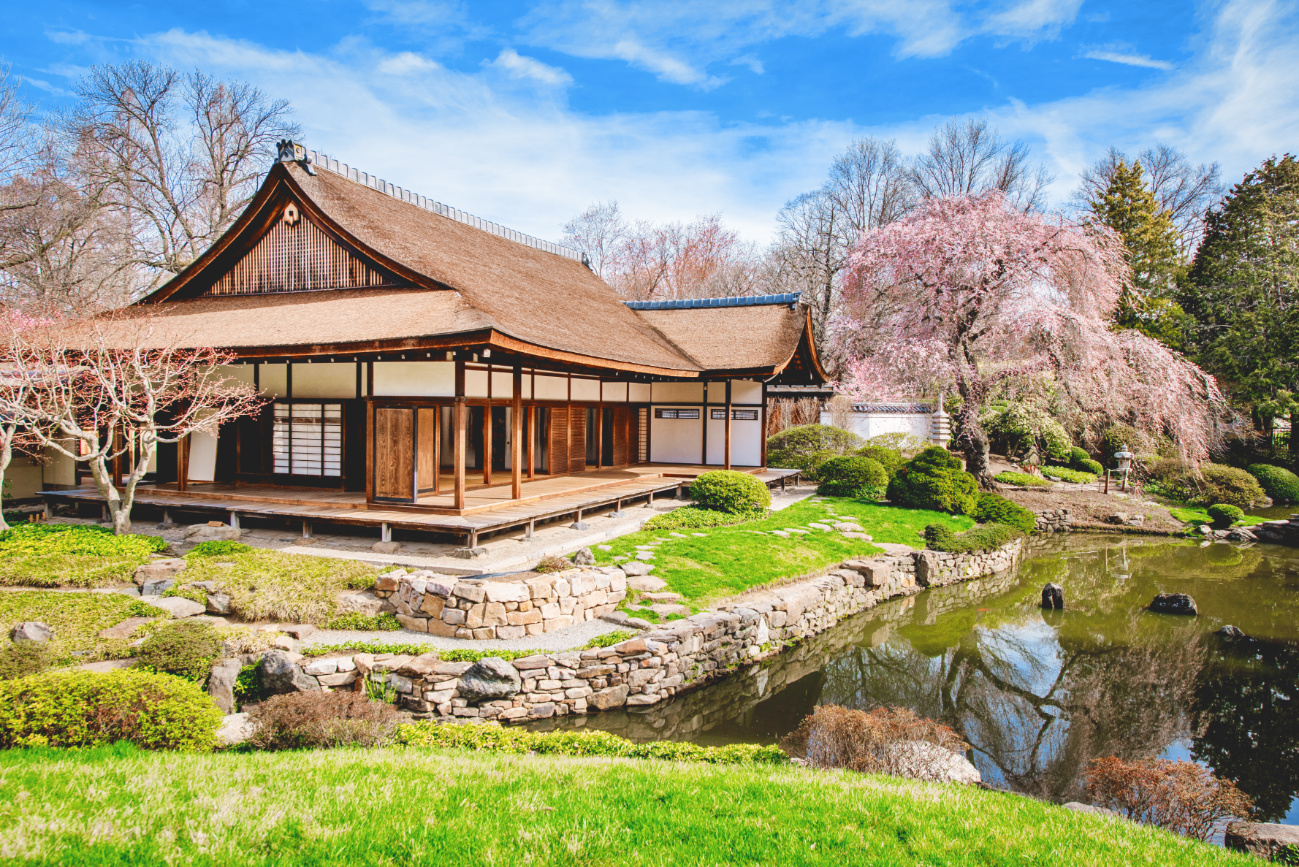
Shofuso Japanese House and Garden located in Philadelphia’s West Fairmont Park (Photo: Sean Marshall Lin)
The raised funds will be used to repair damage from a June vandalism incident.
By P.C. Staff
The bad news from June 15 was that the Shofuso Japanese House and Garden in Philadelphia was vandalized, causing extensive property damage.
The heartening news since that incident: In late September, an anonymous donor gave the Japan America Society of Greater Philadelphia — the nonprofit that operates Shofuso House — a large sum of money to help pay for repairs.
“I am happy to report that we received an anonymous donation of $50,000 in support of our recovery efforts,” wrote Associate Director of Organizational Culture Rob Buscher in an email to the Pacific Citizen. “With that major contribution, we have now exceeded our target fundraising goal and are able to begin the restoration work in earnest.”
The incident (Pacific Citizen June 24-July 14, 2022) not only resulted in damage to exterior parts of the building but also to fusuma (vertical sliding panels) in the building’s interior that were painted by renowned painter Hiroshi Senju of Japan.
Another bit of good news: There is no evidence that the act of vandalism was motivated by anti-Japanese or anti-Asian animus.
“I think at this point, the sentiment is that it most likely was an opportunistic act of vandalism,” Buscher said. “But again, you know, it’s really hard not to feel a certain kind of way, when this does happen to the only Japanese American space in our city. … They had to go out of their way to go to the park to where this is located. It’s not just on the street, it’s not like they were walking down the sidewalk and saw something that they thought would be easy to break into. Whoever did this had to come into the park and … it took a bit of effort rather than just kind of a crime of opportunity.”
Although no arrests have been made, Buscher told the Pacific Citizen that two days after the incident, the staff caught a group of young people attempting to steal items from the gift shop.
“When the site staff approached them about it, they emptied their pockets and gave back what they took. And that was the end of it,” Buscher said. “But we’re unsure if this was a completely unrelated incident, or if this may have been the same group of individuals who did commit the vandalism. Needless to say, it rattled some of the site staff. And that evening, there was another break-in attempt.
“Thankfully, one of our site staff was still on site, and I guess the people thought that they were gone for the day. And it looked like young people again, like hard to say what age but probably teenagers. They jumped the fence, and then almost immediately, our gardener encountered them and, you know, just kind of said, like, ‘Hey, what are you doing here?’ and they just ran, they jumped over the fence and ran away, and we haven’t seen them again since.”
Prior to receiving the $50,000 anonymous donation, a more robust security video system was installed, and hedgerows were planted to serve as a barrier to prevent people from entering the premises via the exterior fence.
Soon after the incident, Buscher said that a crowdfunding campaign through GiveButter.com was initiated and that more than $11,000 was raised to pay for the repairs and upgrades before the larger anonymous donation had been received.
If there was a silver lining to the incident, it may be on the intangible side, according to Buscher. “I think that the other thing that this has done is kind of bring our community closer together.
“It’s been hard for people to kind of feel the initiative to come and gather in person at places without feeling obviously the danger of Covid, but even beyond that, it’s been a long time since I think the Japanese American community has really felt like Shofuso was a space of their own, like a community space.”
One of unique aspects to the Shofuso House was a waterfall mural in the building’s interior by Senju. The mural extended across the interior’s fusuma, two of which received extensive damage. Fortunately, that damage is not readily visible to the general public.
According to Buscher, the area of the Shofuso House where the panels are positioned is in an interior room that face inwards — and not part of the general public’s tour. “If you look closely through the open panel, then you can see the damages. But for the average visitor who’s touring the house, and really kind of looking more at the garden, I think, pulled their attention away from the damaged panels,” Buscher said.
When he was informed of the damage, Senju sent a message to the Japan America Society of Philadelphia and said, “Art is created to appeal to our common humanity, which transcends all race and ideology. A work of art belongs to the artist while painting, but when it is finished, it leaves the artist’s hands and becomes the property of all humankind. This is what makes public art so powerful. The work I created for Shofuso House belongs to the people of Philadelphia. I hope they will continue to cherish it.”



